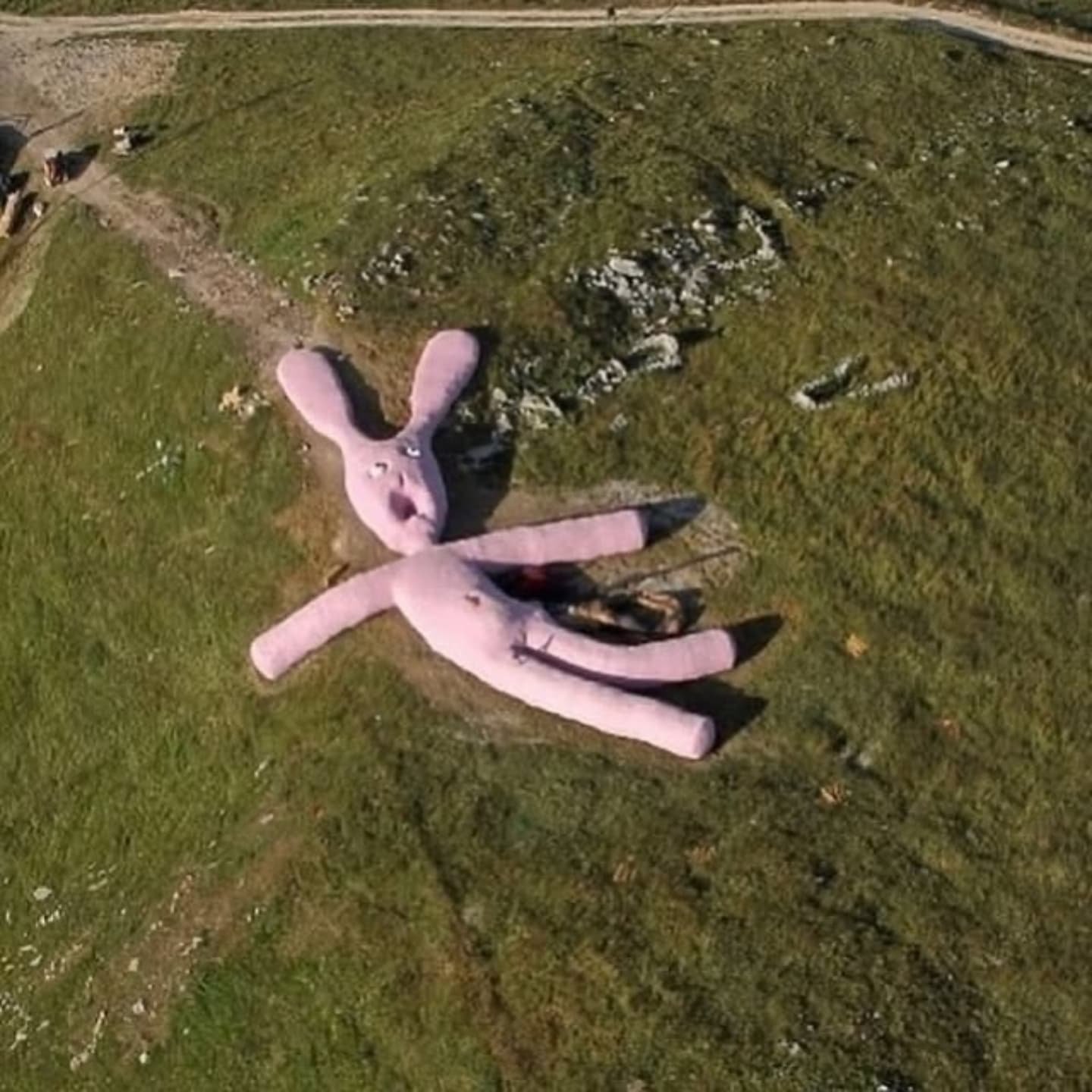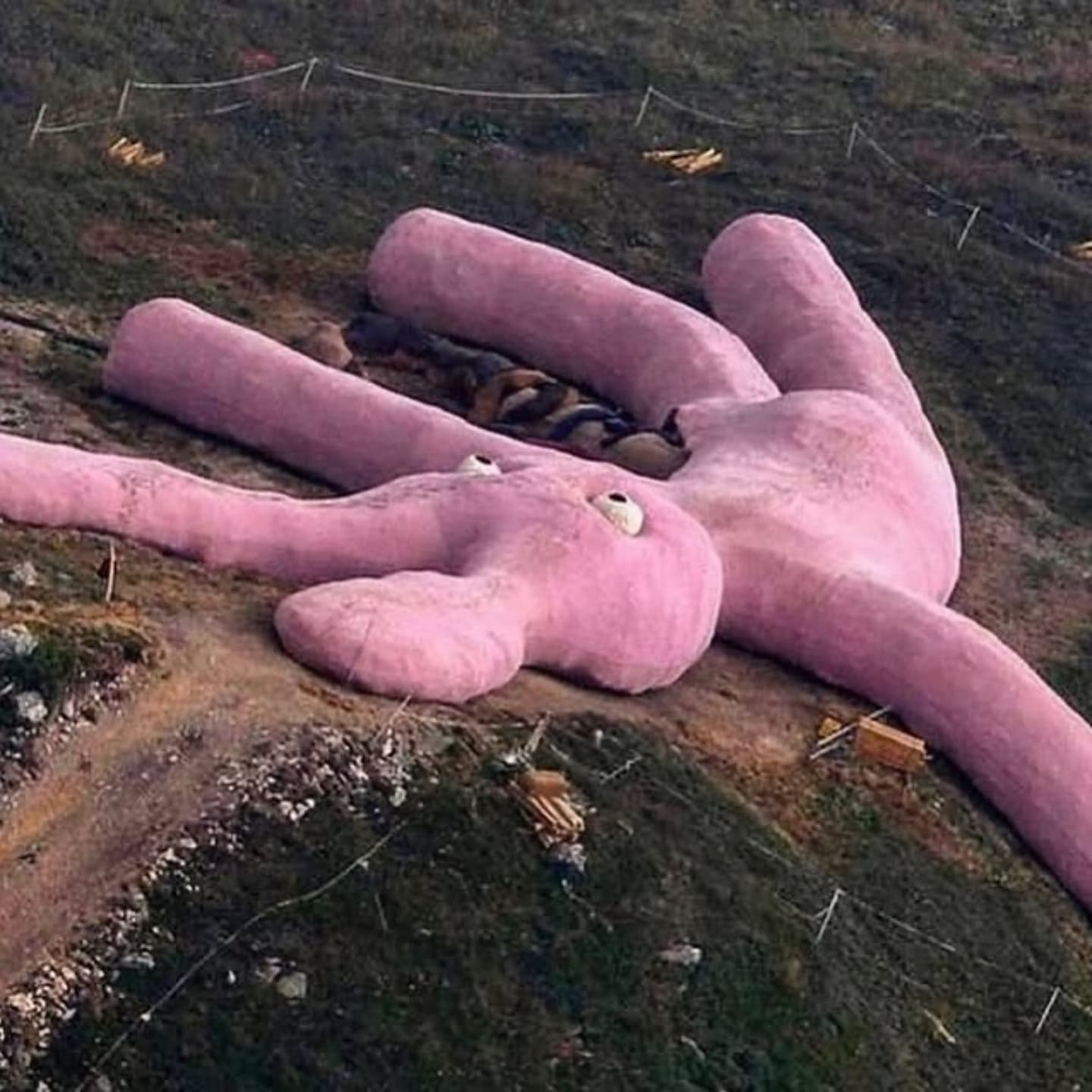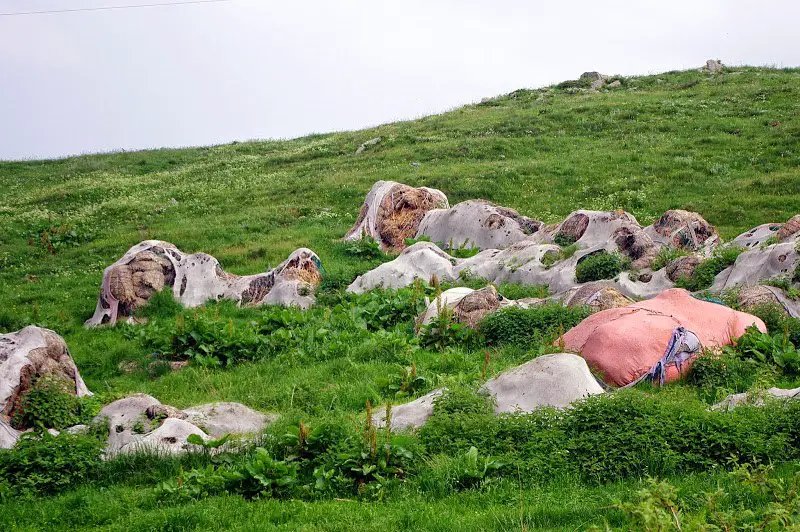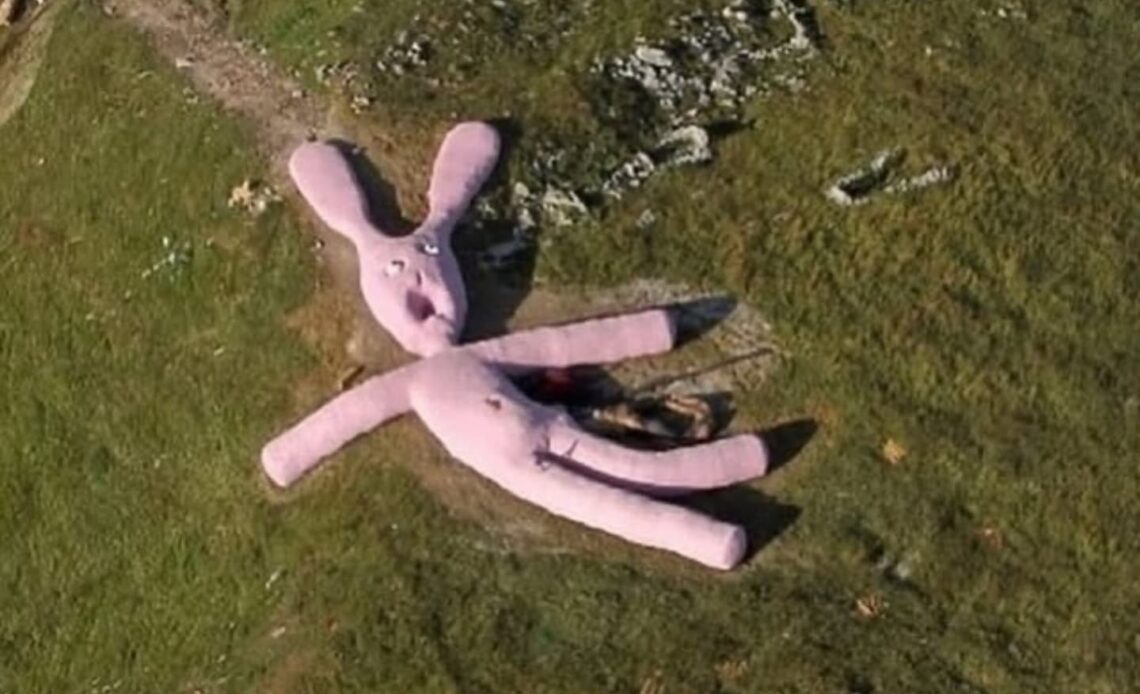In the peaceful mountains of **Artesina, Northern Italy**, something once stood that was so bizarre, so surreal, that it made headlines around the world. A **200-foot-long, 20-foot-high pink rabbit**, lying lifelessly across the hillside, captured the imaginations of travelers, artists, and internet users alike. Now, nearly two decades later, **the giant pink rabbit is almost completely gone**, swallowed by time, nature, and curiosity.

### What Was the Giant Pink Rabbit?
Created in 2005 by **art collective Gelitin** from Vienna, Austria, the massive stuffed bunny wasn’t just art — it was an **interactive installation**. Visitors could hike to the site, climb on its body, lie on its stomach, or even nap on its ears. The artists envisioned the rabbit as a blend of humor, absurdity, and existential reflection. It was purposely grotesque, cartoonish, and whimsical — a strange contrast to the serene Italian Alps.
The piece was **meant to decompose slowly**, left to nature as part of the artwork’s lifespan. The artists expected it to last until around 2025 — and while it did persist for many years, **its pink hue faded, its shape collapsed, and now only fragments remain**.

### Why Did It Capture the World’s Attention?
In the age before TikTok and Instagram, photos of the **giant pink rabbit** went viral on early blogs, travel forums, and art websites. Its strange placement, enormous scale, and plush-toy design made it instantly memorable. It became a symbol of offbeat creativity and experimental land art — a modern myth of the mountains.
### What’s Left Today?
As of now, **very little of the rabbit is still visible**. Nature has reclaimed most of its body. The once-vibrant pink fur has discolored, the stuffing scattered or decayed, and the shape has flattened into the grass.
Yet, for those who once hiked there, it’s a memory — of joy, confusion, and art without limits.

### The Legacy of the Pink Rabbit
Though nearly vanished, the **Artesina pink rabbit** remains an important chapter in the world of **contemporary land art**. It challenged norms. It made people laugh, scratch their heads, and ask, “Why is there a giant bunny in the Alps?”
